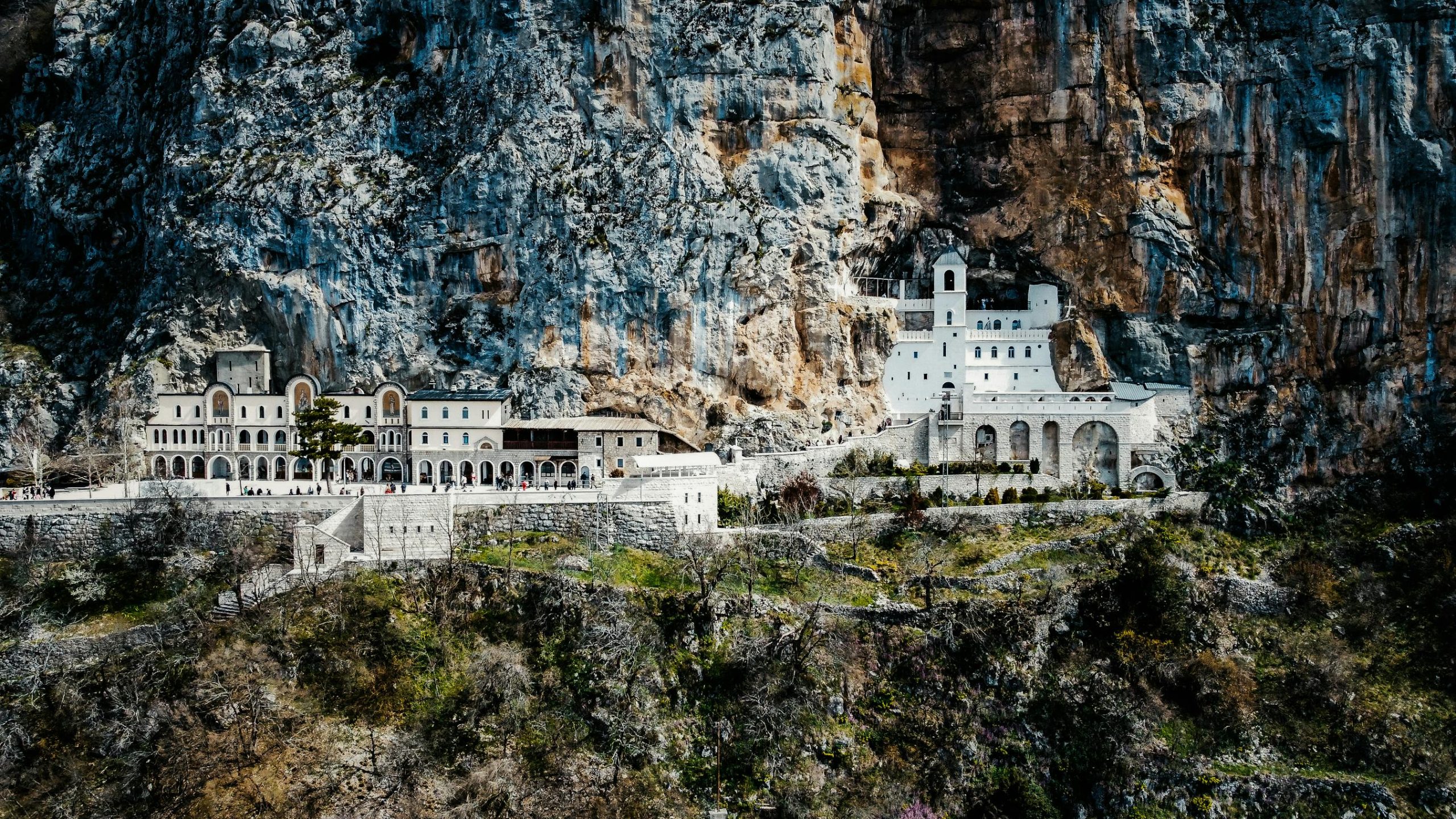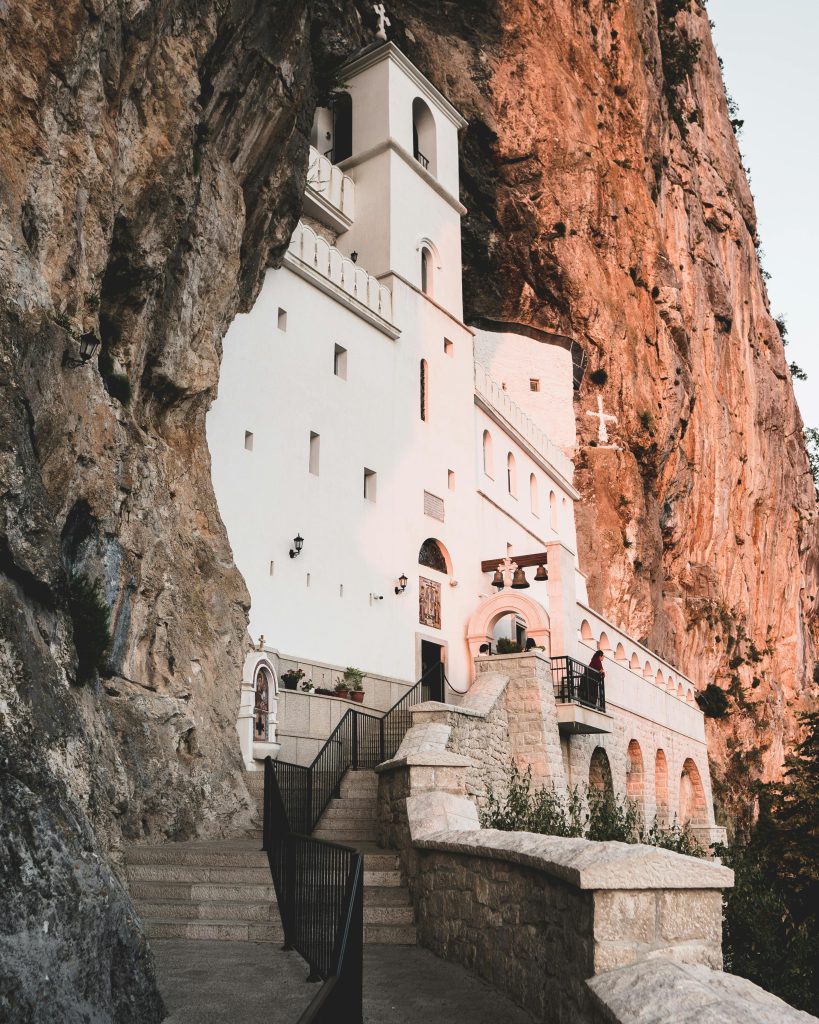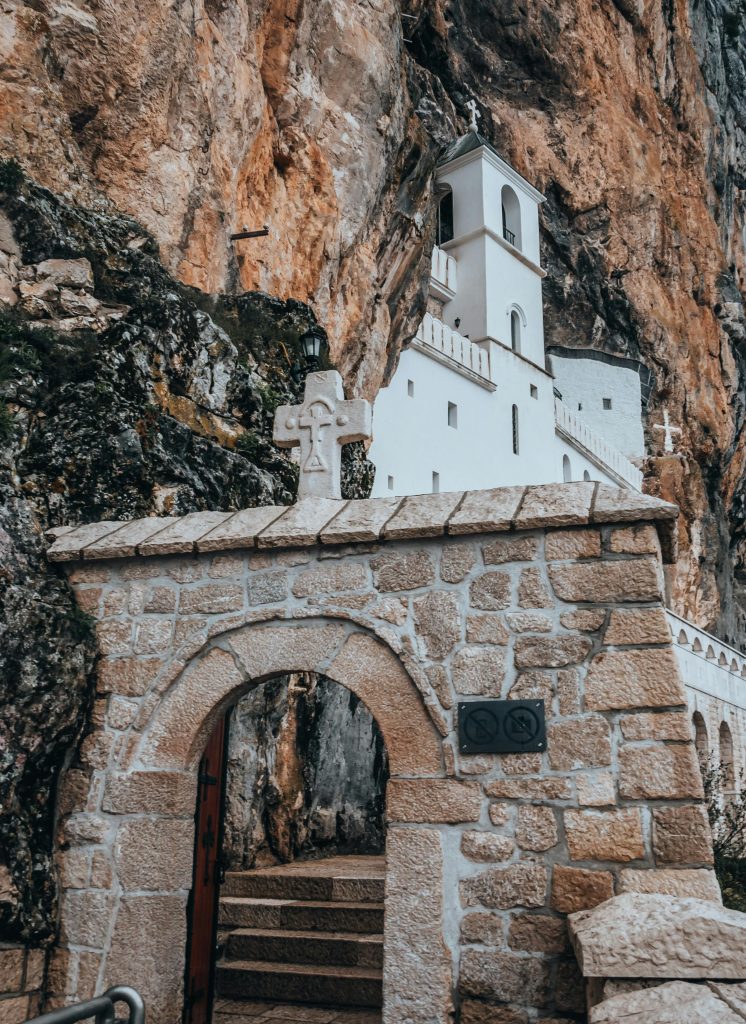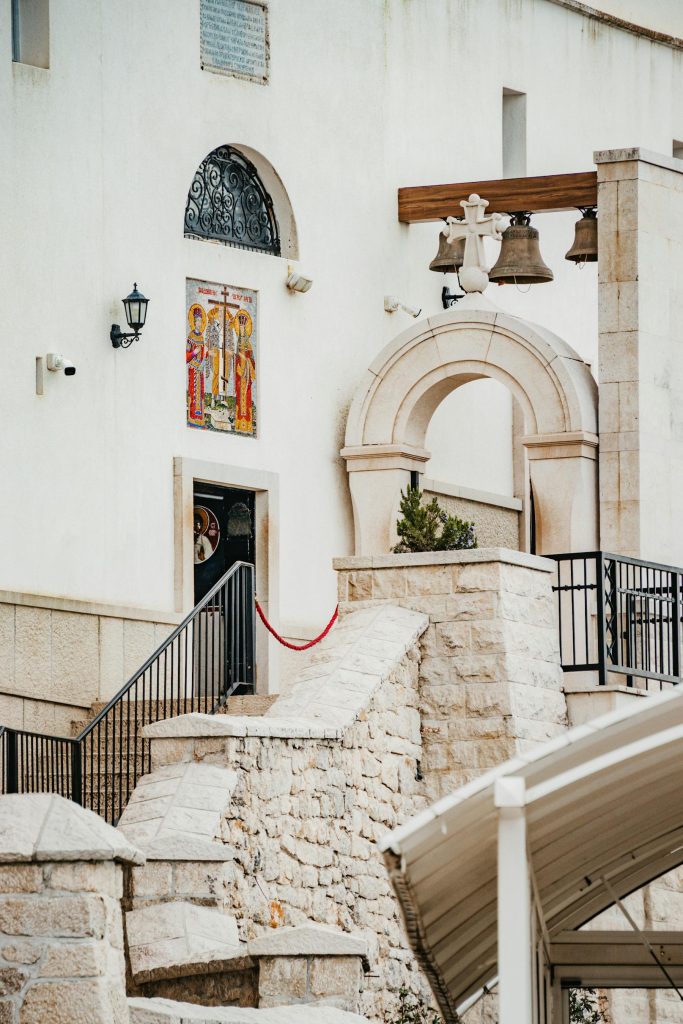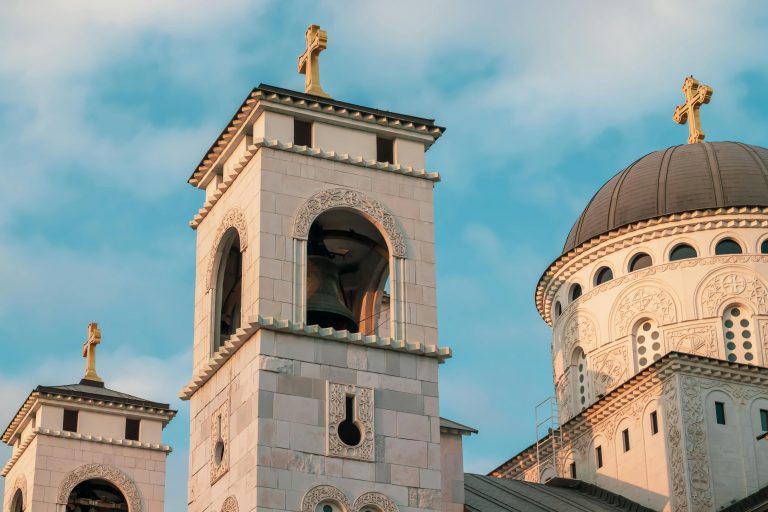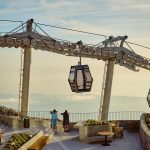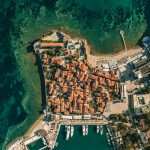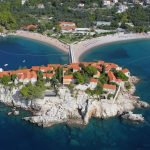Ostrog Monastery is widely regarded as one of Montenegro’s most awe-inspiring landmarks and spiritual destinations. Perched dramatically against a sheer vertical cliff face 900 meters above the Bjelopavlići Plains, this sacred site lies between the cities of Niksic and Podgorica. Its unique cliffside location, remarkable architecture, and powerful spiritual atmosphere make it a must-visit for tourists, pilgrims, and history lovers alike. For many, a journey to Ostrog is not only a visual experience but a transformative one.
The History and Legend of Ostrog Monastery
The history of Ostrog Monastery dates back to the 17th century, during a time of great political and religious upheaval in the region. It was founded by Saint Basil of Ostrog (Sveti Vasilije Ostroški), the Bishop of Herzegovina, who sought refuge from the Ottoman Empire and chose the mountainside to establish a sanctuary of worship and spiritual retreat. Saint Basil, known in his lifetime as Vasilije, became a revered Orthodox Christian saint after his death, and his enshrined relics are believed to possess miraculous healing powers.
Saint Basil’s body is interred in a reliquary housed within the monastery’s upper church. According to legend, many visitors have experienced physical and emotional healing after praying in his presence. His spiritual legacy has made Ostrog one of the most important pilgrimage sites in the Balkans, drawing people of various religious backgrounds, including Orthodox Christians, Catholics, and Muslims.
Architecture and Layout: Built Into the Rock
Ostrog Monastery is a masterpiece of religious architecture, ingeniously built into a vertical cliff. Its construction began by utilizing a natural cave, which provided shelter and seclusion. The building seamlessly integrates with the mountain, making it appear almost as if it were a natural extension of the rock.
The complex is divided into two main parts: the Upper Monastery (Gornji Manastir) and the Lower Monastery (Donji Manastir).
The Upper Monastery
The Upper Monastery is the heart of Ostrog and the site of Saint Basil’s relics. It consists of two small cave-churches:
- The Church of the Presentation: Built within the first cave, this church is adorned with 17th-century frescoes painted directly onto the rock walls.
- The Church of the Holy Cross: Found in the second cave, this church served historically as storage and living quarters for monks.
The Upper Monastery offers breathtaking views over the valley and surrounding mountains. Its location, carved high into the stone, adds to the awe-inspiring sense of spirituality and solitude.
The Lower Monastery
The Lower Monastery is located approximately 5 kilometers below the upper section and includes the Church of the Holy Trinity, built in 1824. This part of the complex often serves as a gathering point for visitors, with accommodation, a gift shop, and communal spaces.
A Place of Miracles and Pilgrimage
Ostrog Monastery is more than a historical site; it is a living center of faith. It attracts over a million visitors annually, many of whom embark on pilgrimages to seek healing, offer prayers, or simply experience its spiritual ambiance. Some believers walk the entire route from the Lower to the Upper Monastery barefoot, as a symbol of devotion and penance.
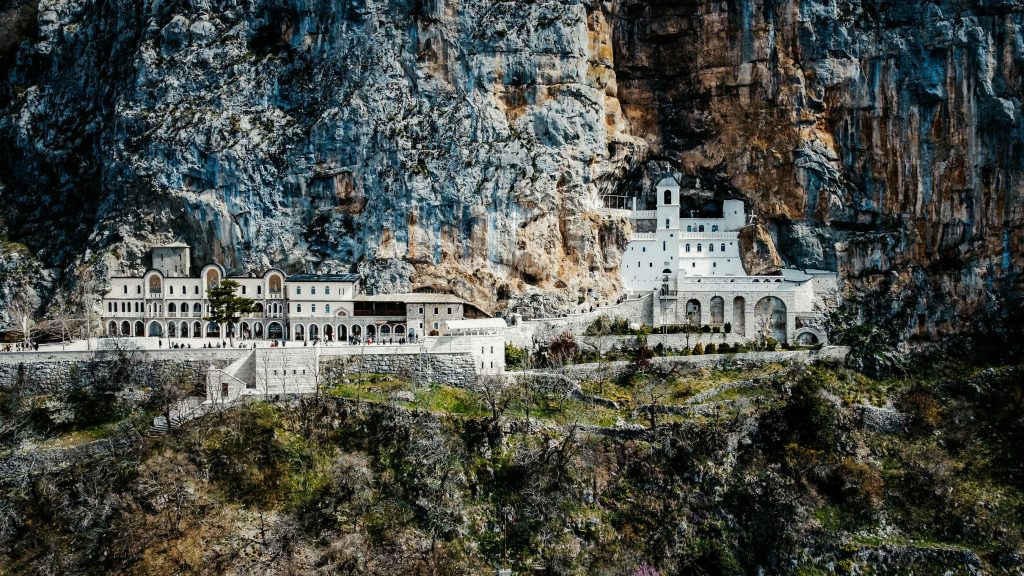
Numerous stories abound of miraculous recoveries, dreams involving Saint Basil, and emotional awakenings. These personal testimonies have made Ostrog a beacon of hope for those facing illness, despair, or spiritual crisis.
Resilience Through History
Throughout its history, Ostrog Monastery has withstood natural disasters, political changes, and war. One notable moment came during the 19th century when Duke Mirko Petrović and 17 of his men took refuge in the monastery to defend it from the advancing Ottoman forces. They held out for nine days before being ordered to evacuate, preserving many of the monastery’s priceless artifacts.
In the early 20th century, a devastating fire damaged much of the structure. From 1923 to 1926, major renovations were carried out to restore and expand the complex. Despite these challenges, Ostrog Monastery has remained an unshakable spiritual symbol and continues to thrive as one of the most visited Orthodox shrines in southeastern Europe.
Visiting Ostrog Monastery
The monastery is open year-round and accessible day and night, making it a flexible destination for visitors. It can be reached by car from both Podgorica and Niksic, and guided tours are often available. However, many pilgrims prefer to make the journey independently for a more personal and reflective experience.
The road leading to the Upper Monastery is narrow and winding, with stunning views and moments of steep ascent. Parking is available at the Lower Monastery, from which visitors can walk or take a shuttle bus to the top.
Travel Tips for Visitors
- Dress Modestly: As a religious site, modest clothing is expected.
- Stay Overnight: Pilgrim accommodations are available, offering a more immersive spiritual experience.
- Bring Offerings: Candles, flowers, and small icons are often left as tokens of devotion.
- Hydrate and Prepare for the Walk: Especially in warmer months, the hike between the two monasteries can be strenuous.
Cultural Significance
Ostrog Monastery plays a vital role in Montenegro’s religious and cultural identity. It serves as a reminder of the country’s resilience, spiritual heritage, and unity across faiths. Its cross-religious appeal makes it a symbol of peace and coexistence in the Balkans, where religious diversity has often been a source of both tension and inspiration.
Final Thoughts
Ostrog Monastery is not just a monument of stone and history but a living, breathing sanctuary that continues to inspire awe and devotion. Whether you’re drawn by faith, curiosity, or the dramatic setting carved into the cliffside, a visit to Ostrog is sure to leave a lasting impression.
Its timeless architecture, sacred relics, and panoramic vistas create a profoundly moving experience. For anyone traveling through Montenegro, Ostrog Monastery stands as a spiritual and cultural jewel—a place where the material world meets the divine.
